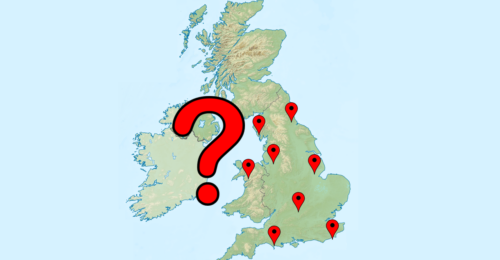How FLEX reactors can prevent transmission system gridlock
In the race to reach net zero, we face a huge problem that few people outside the energy industry ever talk about. The scale of this problem is so large that, if no solution is found, it could scupper plans to decarbonize by 2050 – not just in the UK, but around the globe. And yet many media outlets are virtually silent on the matter.
So, what is the problem? It’s painfully simple: electricity grids need to be able to cope with the increasing amounts of clean electricity being added to them – and if they can’t, the drive to decarbonize could fail completely.
Let’s examine the problem in more detail. Everybody knows that moving from fossil fuels to clean energy sources requires building more zero-carbon generation capacity such as wind, solar, nuclear and hydro. But what’s seldom – if ever – acknowledged is the fact that all this capacity needs to be connected to and transmitted through the grid if it’s to truly be of use.
And if we don’t have sufficient capacity on the transmission system – if there aren’t enough pylons, cables, substations, transformers and so on to cope with the new, clean generation being installed – then we face a huge bottleneck in actually getting that electricity to end-users.
Add in the fact that electricity production currently accounts for only around 20% of the UK’s final energy use, and suddenly the scale of the problem becomes apparent: if we’re to electrify sectors of the economy such as heating or transport, there not only needs to be a vast increase in the amount of electricity generated, but an equally large increase in the transmission system infrastructure to carry that power, otherwise boosting the amount of clean generation is pointless.
It’s a bit like the situation with introducing electric vehicles to reduce transport emissions – it’s all well and good bringing more EVs onto the roads, but if there aren’t enough charging points available to accommodate them, the vehicles will quickly grind to a halt.
Building new transmission infrastructure is not only expensive, planning is often very complex and time consuming, and we should not forget that as much as 9% of electricity generated is lost. Before building new infrastructure, there are a number of things that can be done:
- Smooth out consumption to even out the flow of electricity through the transmission network;
- Store energy at source when there is spare generating capacity and dispatch it into the system when demand is high
- Store or generate electricity locally to avoid the constraints in the transmission system.
Delivering a balanced and effective grid is not just an infrastructure challenge, it’s a policy imperative. Without a grid that is both robust and adaptable, we will simply never see renewables or other clean energy sources penetrate the market to the extent they can and should.
Put simply: net zero demands that we mobilise every last breath of wind, ray of sun and nuclear solution at our disposal – and make sure the grid is sufficient to adopt and deploy them. Wasting clean energy because our grid cannot distribute it – while building gas plants for peak load – is not something for which our children and grandchildren will forgive us.
We at MoltexFLEX are playing our part in this – by developing the FLEX reactor to be adaptable, working hand in hand with system operators as they evolve energy networks for the net zero future.
Perhaps even more important, our innovative and market-leading GridReserve thermal storage system can hold energy for several days, with minuscule losses, so it can be deployed into homes and businesses when they need it.
Keeping 1.5 alive demands innovation everywhere – and preventing gridlock is one of the biggest challenges we face.





